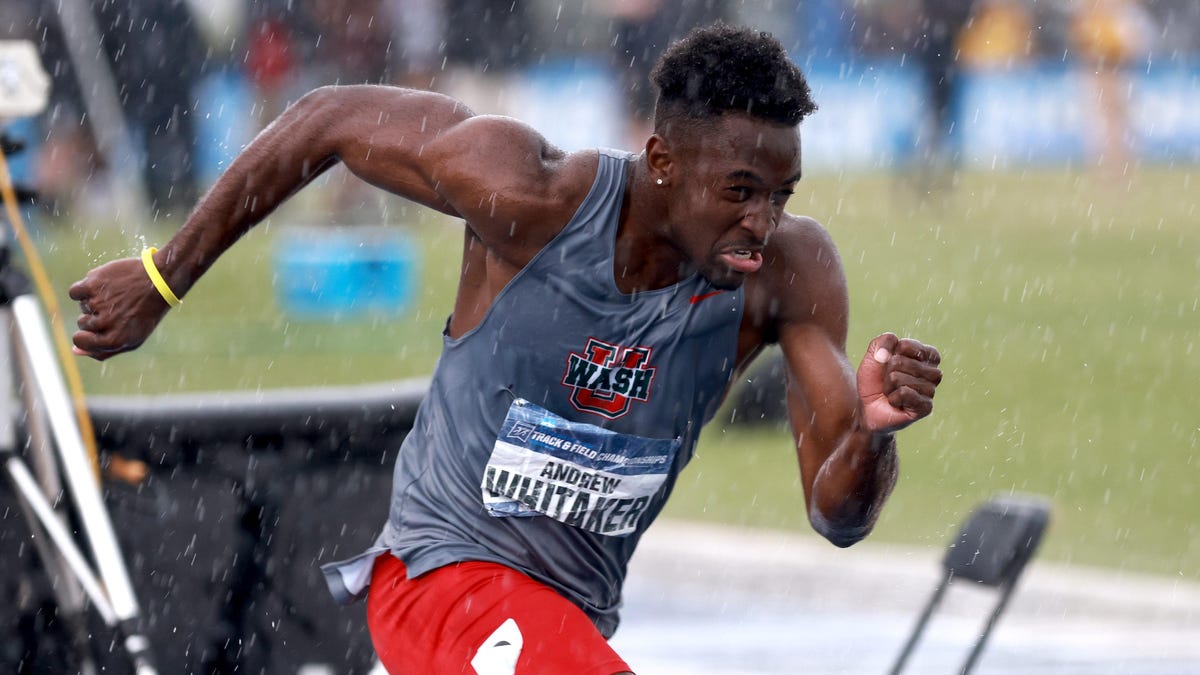How hard is it for Division III athletes to get drafted into the NFL?

Andrew Whitaker, a championship-winning track star and cornerback from Washington University in St. Louis, has a Masters degree and a plan to go to medical school. But for now, his focus is on becoming one of the few Division III athletes to get signed to the NFL. Med school can wait.
Wash U hasn’t sent a player to the league in half a century. Whitaker reportedly played four games of football in high school. As unrealistic as it seems to the outside eye, though, he is all in on his NFL dream. He worked out with the Bengals last week, and he’s ready to prove himself on a pro roster.
As he crosses his fingers this weekend and hopes for the best from the draft and the undrafted free agency signing period that follows, we took a look at what the odds for a player in Whitaker’s situation really look like.
DIII in the draft
Division I football is a tough market to break into out of high school — if you’re not heavily recruited, your best shot is often to try to walk onto a DI squad. While there are some standout success stories there, though, you’re more likely not going to see much, if any, playing time as a walk-on. Talented kids end up at lesser-known schools for a chance to see some action on the field.
G/O Media may get a commission

47% Off
Samsung Galaxy Buds Live
Crystal clear sound
Feature 12mm speakers with enhanced bass tones to make your music sound incredible, and have an excellent battery life too.
At any given moment, it’s a general rule that there are fewer than a dozen former DIII players active in the league. Right now, there are five, all of whom attended Midwestern colleges in Illinois, Wisconsin, and Minnesota. Two were selected in the draft, both in the last two years, which could be good news for Whitaker. Several of them were also active in track and field during their college years — another parallel for the NFL hopeful. The other three were signed after the draft.
And just two months ago, Super Bowl-winning guard Ali Marpet announced his retirement from the NFL, seven years after the Buccaneers selected him from Hobart College in the second round, making him the highest-drafted DIII player of all time. Since 1990, only 22 DIII players have been selected in the draft, though more have been given an opportunity to try out with the team through undrafted free agency. Often relegated to the practice squads, there’s a reality that these dreamers must face: talented though they may be, the competition they faced and the resources they had access to during their college years simply cannot measure up to the Power 5 alums they’re playing with.
Alternate paths
If, like Whitaker, a DIII player is wholly committed to getting to the NFL, there are always the other leagues in which to prove yourself against higher-level competition. The reborn XFL and USFL are perhaps the most famous, along with Fan Controlled Football and the Canadian Football League.
The problem is that these programs are dying as quickly as they’re popping up, and there’s no guarantee you’ll get the years or the playing time you’d need to make it up to the next level. It’s a tough draw, but you can put in the absolute maximum dedication and effort and still never see an NFL contract. It’s not impossible — the transfers have been done before — but it takes a commitment with no guarantee at the end.
2022 DIII market
Culver-Stockton College’s Andrew Rupcich was invited to the NFL Scouting Combine this year and made quite a mark with his Pro Day numbers. Culver-Stockton isn’t even in DIII — it’s a NAIA school, meaning that it’s not an NCAA member.
North Central WR Andrew Kamienski may also be on some teams’ radars — he led NCAA DIII in receptions and receiving yards in 2019 and, upon graduating, has placed his name on several all-time leaderboards in DIII for both categories.
For all the latest Sports News Click Here

